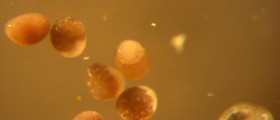
Embryos that were created via IVF are usually transferred to the mother's uterus, or the uterus of a surrogate mother, on day three or five of their development. This is known as the blastocyst stage, and transfer at this stage has several advantages. First, the chances of pregnancy have been shown to be the best at this stage and at the same time, the chance of twin or higher multiple development is reduced.Out of the embryos that were created, the best quality ones will be pin pointed by embryologists at your clinic. To transfer the chosen embryo or embryos to the uterus, a small tube called a catheter is used. The embryo will float in a small amount of fluid and will be placed in a way that allows it to reach the top of the uterus, where it will hopefully implant itself.
No anesthesia is required for the embryo transfer procedure and it is normally not painful. Women who have undergone IVF tend to say that it is a little unpleasant, and not unlike the sensations of a PAP smear. After lying down and reading a magazine or newspaper for a while, you will be able to get dressed and leave. You will then continue to be monitored over the next few days or weeks. Twelve to fourteen days after the transfer procedure, you will be able to do a pregnancy test.
- www.nhs.uk/conditions/ivf/what-happens/
- www.cdc.gov/art/patientresources/transfer.html
- Photo courtesy of ZEISS Microscopy by Flickr: www.flickr.com/photos/zeissmicro/27872285595/













_f_280x120.jpg)

Your thoughts on this
Loading...